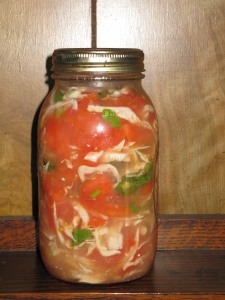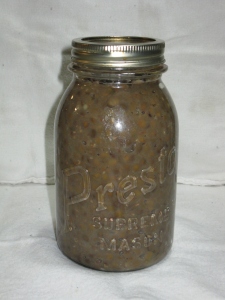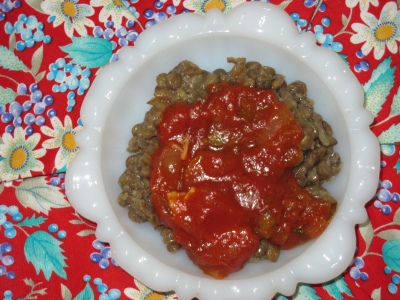I work a farmers market and one of the things that I almost always have left over at the end of the day is Kale. Mid-westerners are known to not like their vitamin K and although they “know they should be eating more greens” they simply cannot make the change from yellow (corn) to green leafy stuff.
I don’t really have a set way to do kale but the last time, I chopped it up very finely in the food processor, added in a little shredded onion and carrot, garlic, lime juice, Braggs Amino Acids, and of course salt. The idea was to duplicate the flavor that goes into my kale chips….well, it didn’t turn out tasting like Kale Chips but it is still tasty and a good way to consume the nutrient dense kale.
A person’s liking for fermented food is as individual as the person themselves. For instance, Hubby likes his Kraut shredded, he likes the texture better. Darling Daughter likes it slaw cut ( grated). Instead of making two batches, I try to vary it each time I make it. Almost every week for the past 10 years I have filled jars with some concoction, with something always working in one corner of the house or other.
Something for consideration, particularly with children, is that their tastes buds can be more sensitive so too much hot peppers or spices can be overpowering. When one starts the GAPS diet we tend to want to make things as “flavorful” as possible to entice the children….when in reality the child may do best on having foods a bit more bland and then gradually add in the herbs and spices. And I think this goes ditto for aging palates as well. Things that we might have liked when we were younger change too as we age. So if you have family members that lean more to the “basic flavors”, I encourage you to stick to the basics. As fermenting is becoming all the rage, we do not have to compete with our neighbors with more hot peppers, cumin, etc. Nor are we slaves to a particular recipe. A good basic beans with onion can be as satisfying as the ones with all the extras. If mild Kimchi is preferred over the dragon breathing kind then make it mild. The goal is to have your family consuming these foods at every meal. Our fermenting should be to satisfy our family not to try and out do others. If it is too hot, overly spicy, or the flavor just grows boring, the consumption will slack off and our family will lose the intestinal benefits they gain from eating them. In the growing community of fermenting it is important to remember that we are all after the same thing, intestinal health and that we need to love one another and support one another in our individual preferences.
Happy Fermenting!!







